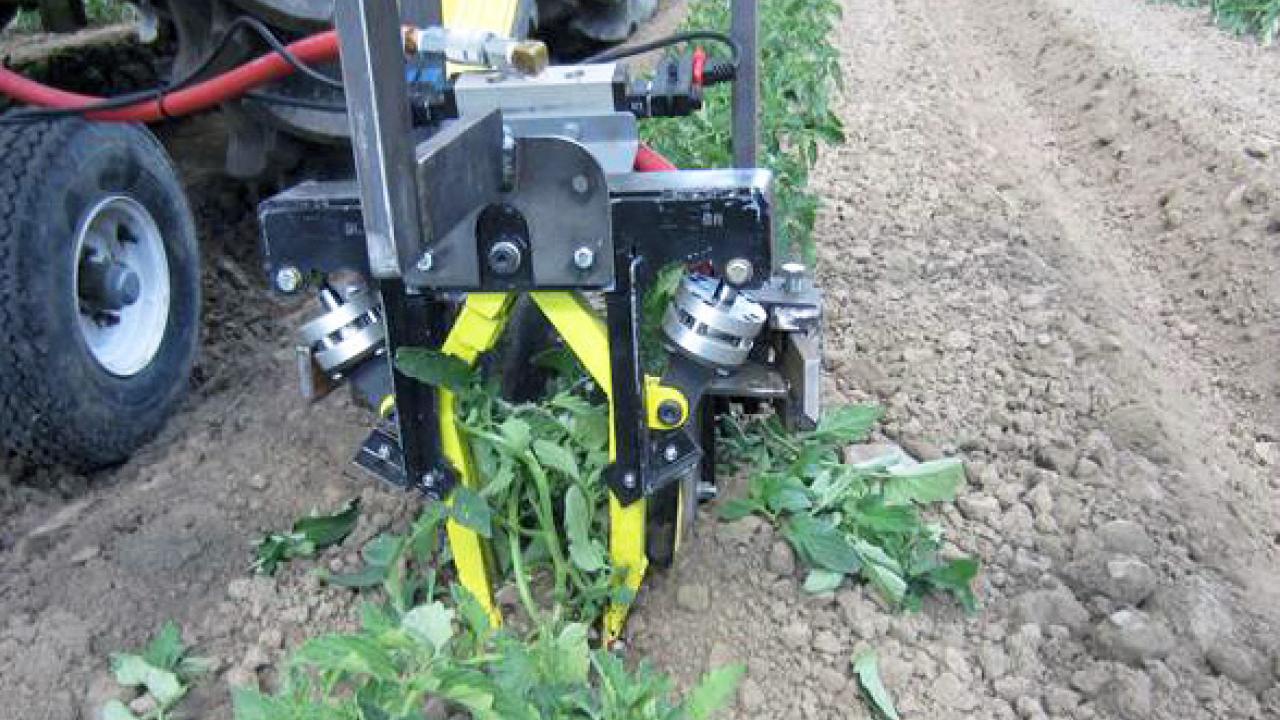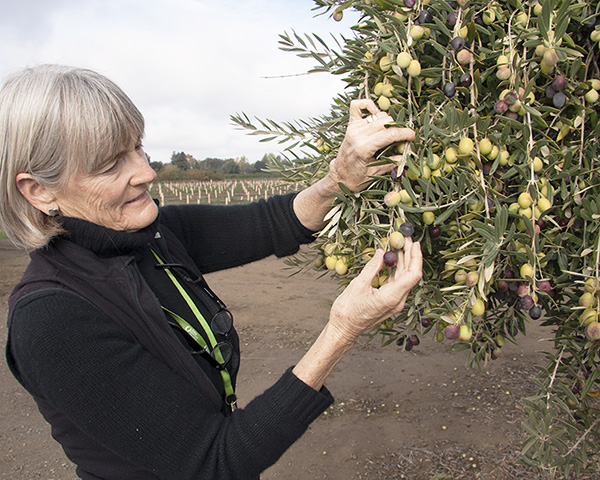
Lightening The Load In Orchards And Fields
CA&ES scientists work with growers to increase agricultural efficiencies.
UC Davis has a long history of helping California agriculture become more efficient, productive, and safe for humans and the environment. Today, as farm labor becomes scarce and more expensive, the need for new ways of growing and harvesting crops is greater than ever. CA&ES scientists, working with growers, county farm advisors, and many others are delivering the goods.
Designing a virtual orchard
Fifty years ago agricultural engineers climbed into citrus trees and with a plumb bob on a string identified the location of individual fruits to help them build a physical model — an early effort to gain insight into how to mechanize the harvest. Stavros Vougioukas, a professor of biological and agricultural engineering, took the same idea and used modern digitization tools to create a virtual orchard for different crops.
"We came up with a way to measure the locations of fruits at a very high speed while they are being harvested," he said. A fruit picker wore a glove outfitted with an antenna that transmitted signals to four receivers. Every time the picker grabbed a fruit, its precise location in time and space was recorded.
With research support from the California Pear Advisory Board and the Cling Peach Mechanization Fund, Vougioukas has been collecting data from trees with different architectures to simulate how robots could work in an orchard without building expensive prototypes. Software calculates the picking efficiency and speed.
"The goal is to enable better and faster design for either harvest-aid platforms or robotic harvesters," Vougioukas said.
Vougioukas also is developing an intelligent transportation system utilizing small, mechanized carts to ease movement of harvested strawberries from the field to a collection site.

Cooperative Extension specialist Louise Ferguson is helping industry find ways to mechanize the harvest of table olives. (John Stumbos | UC Davis)
Mechanizing table olive harvest
Traditionally, table olives are hand harvested by crews on ladders, a slow and expensive process. Labor costs can run 45 to 60 percent of producers' gross returns.
Mechanical harvesting has been developed for many tree crops, but table olives are tricky because they can bruise easily when ripe and then won't cure well. Recently, two types of harvesting technology have shown promise. The first is a tree shaker that grips the trunk and shakes the olives free. The second method utilizes a canopy contact harvesting head that gently moves through the branches to liberate the olives. Louise Ferguson, a Department of Plant Sciences Cooperative Extension specialist, has worked diligently with growers, engineers, fellow scientists, even family members to test these technologies.
Gavin Nielsen is an engineer who has worked with Ferguson for many years. His company, Nielsen Technologies, has successfully harvested table olives with an inertial trunk shaker: 100 trees per hour with an impressive 90 percent removal. "I am confident that mechanical harvesting will become the standard for olive harvesting in the very near future," he said.
Another approach for automating the olive harvest uses a contact head that looks like a giant bottle brush. It is attached to a tractor and moves through the orchard, passively engaging the tree and coaxing the olives from the branch. With help from retired UC Davis agricultural engineer John Miles and others, refinements have enabled this technology to harvest olives without bruising the fruit and at economically feasible levels. Importantly, both a consumer panel and a trained sensory panel couldn't tell the difference between the hand-harvested and mechanically harvested olives.
Ferguson is quick to credit many people who have helped her since she first started working on mechanical olive harvesting 20 years ago. "Progress is always incremental," she says. "We can do the technology and we can do the evaluations. Now it's ready for a commercial fabricator willing to make the machine."
Building a better cultivator
Another team of researchers at UC Davis is designing a robotic cultivator that can remove weeds in commercial vegetable fields more efficiently than currently available technology.
"Machines can recognize a weed, and they can recognize a crop plant, but they have trouble distinguishing one pattern from another when they are commingled, as is often the case with weeds and young crops in the field," said David Slaughter, a professor of biological and agricultural engineering.
The "smart" cultivator in development by Slaughter and colleagues utilizes small knives that reach out to uproot weeds and then retract to keep crops intact. It will weed the beds of crops such as tomatoes and head lettuce. In densely planted crops like spinach, a precision sprayer will be used to kill weeds.
One of the keys to this system is a safe, simple seed coating that will signal the cultivator by emitting a faint fluorescent glow when seedlings emerge. This will enable the new cultivator to identify and avoid the seedlings and move more quickly through a field to eliminate weeds than current vision-sensor models.
This is good news for vegetable growers such as Alain Pincot, managing partner of Bonipak Farms in Santa Maria. "As the cost of labor rises in California, mechanical cultivators become more important to both organic and conventional ag production," Pincot said.
- Related content
- Outlook Magazine Articles